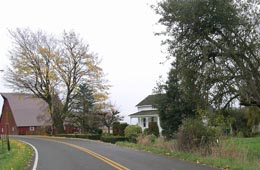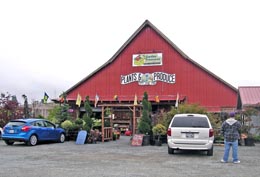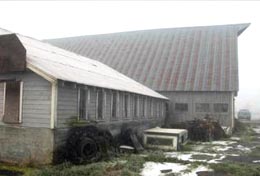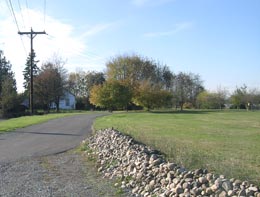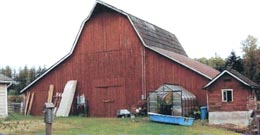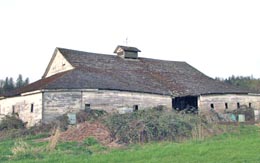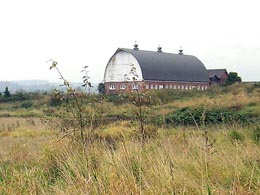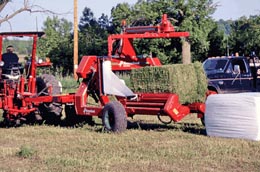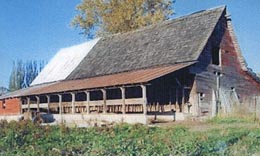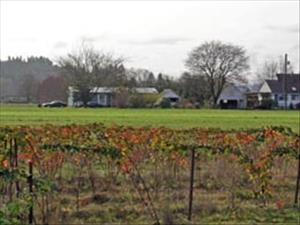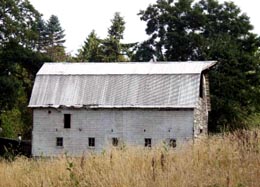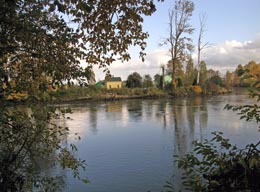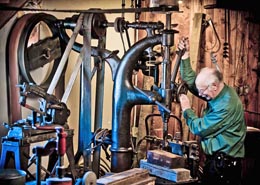This slideshow presents a number of Snohomish County's heritage farms and barns, some that have been in continual use for over a century. It was written by Margaret Riddle and funded by the Snohomish County Community Heritage Program.
Honoring Rural Heritage
Decades before there was a city of Everett, Snohomish County pioneers began farming the lowlands of the Snohomish, Snoqualmie, and Stillaguamish river valleys. Trees were abundant for harvesting, and when land was cleared the soil was rich, giving promise to early homesteaders. By the time Washington became a state in 1889, nearly 20,000 acres in Snohomish County were in cultivation. Agriculture had become second only to the booming logging economy, and dairying rapidly grew from the early 1900s.
Agriculture is still an important part of the county's economy, although recent years have been challenging, especially for dairies. Farmers have needed great resilience and adaptability in order to make a living. A 2007 census of agriculture counted 1,670 farms in Snohomish County, with 76,837 acres in cultivation, an increase of 6 percent over a census taken in 2002. But although the number of farms had increased, farm revenue declined.
Snohomish County farms have often been family businesses, some lasting for more than a century. These farms today grow vegetables, fruits, nuts and berries, alfalfa hay, and winter wheat; operate nurseries and greenhouses for floriculture and aquaculture; raise poultry, cattle, hogs, pigs, sheep, goats, horses, ponies, mules, burros, and llamas; and produce eggs, milk, dairy, and animal products. Farmers today have also found profit in renting out acreage, both to other farmers and for other purposes, such as radio towers.
Although vintage homes have been officially recognized at the state and local levels for many years, heritage farm and barn registration has come mostly in the early years of this century. Barns with various roof types and cupolas, hay hooks, milking sheds, and outbuildings often reflect European architectural roots. Vintage farm equipment remains on many farms. Currently both Snohomish County and the state of Washington have programs to recognize, honor, and preserve this important rural heritage.
Snohomish County's Centennial Farms
Snohomish County officially initiated a Heritage 2000 Program, which includes annual recognition of Snohomish County Centennial Farms. To qualify, farms must have been in constant production and under the same family ownership for 100 years or more.
Centennial Farm families are honored each year by the Snohomish county executive during the opening ceremony of the Evergreen State Fair. As of 2011, 31 farms have been so honored.
Washington State's Heritage Barns Program
In May 2007 the Washington State Legislature passed Substitute HB 2115, which established the Washington Heritage Barn Register to honor and recognize barns as historically significant properties that represent the agricultural, economic, and cultural development of the state. The Heritage Barn Grant Program is administered by the Washington Trust for Historic Preservation. The program supports the preservation efforts of those who own recognized barns and helps to maintain them as significant historic properties.
Since the program was initiated, 23 heritage barns have been listed in Snohomish County and the owners of the Jackknife (Johnson) Ranch in rural Everett have received an $11,900 grant to help with barn restoration.
